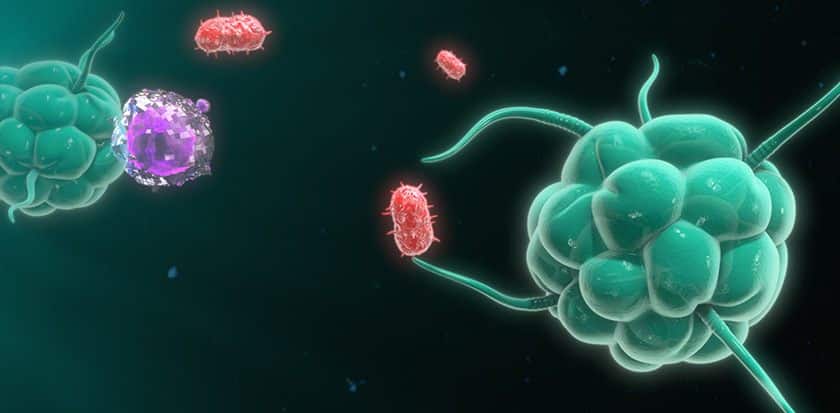Second Don't Eat Me Signal Identified in Cancer Cells, Points to New Immunotherapies
Executing merely a function of detecting harmful bacteria and
viruses to prevent common cold and flu is not the sole role of our immunity system.
Its area of health care services for our body is broad, which we often overlook;
especially in case of counteracting the invasion of cancer cells in our bodies.
Until recently we have been aware of the functions of macrophages
in identifying cancer cells and neutralizing them to prevent from furthering disastrous
activities in our bodies. However, some adamant and aggressive cancerous cells sometimes
remain ineffective in the presence of macrophages – a type of immune cell.
Scientists at the Stanford University School of Medicine have
discovered a second biological pathway that signals immune systems to not spare
cancer cells and kill them. With this new cancer treatment being under trails, it
points out to develop new immunotherapies important for fighting cancer. Further,
the research believes that by improving the performance of antibody anti-CD47, essential
to block the signal ‘don’t eat me’, it shows a promise to develop a new cancer
treatment in combination with the newly developed pathway. As a whole, the duo
will be able to enhance the immune system, and prevent different types of
cancer forms, believes the research head Irving Weissman.
Why Immune
cells Fail to suppress cancerous cells?
Macrophages or white blood cells -innate and integral part of
our immune system function as scavenger cells. As the name suggests, it scavenges
all the infected or cancerous cells by patrolling inside our bodies, and shielding
us against all harmful bacteria. This is how macrophages perform to kill cancerous
cells and others. However, cancer cells are shielded with CD47 proteins on
their surfaces inhibiting the efficacy of macrophages and escape their clutches
easily. While coming in contact to a protein called SIRPalpha, CD47 triggers
cancer cells to release a ‘don’t eat me’ signal. And they fail to identify them
as harmful cells and ignore them.
Ways To
Counteract Their Aggressiveness?
A newly discovered second ‘don’t eat me’ signal proves effective
in curbing impulsive behavior of cancer cells.
It was discovered several years ago, that an addition of an
anti-body protein to CD47, allows both the proteins to stick together and blocks
the signaling pathway of CD47/SIRPalpha at the same time. As a result, macrophages
will restore their function to identify cancer cells and kills as soon as the anti-CD47
antibody deactivates the ‘don’t eat me signals’ of cancer cells.
It is clear now almost every cancer cell is encapsulated with
CD47, so using anti-CD47 proteins; it is possible to suppress the growth of
cancer stem cells responsible for different types of cancer growth and tumor
relapses.
However, the clinical trials showed that some cancerous cells
were aggressive and resistant to antibody anti-CD47and caused dire
consequences. Simultaneously, the cancer cells were fewer in numbers too, which
responded to these anti-bodies.
In order to find a more strenuous process to neutralize the
effects of cancer cells, scientists at the Stanford University of School of
Medicine tested surface proteins infused with greater quantity of MHC (Major
Histocompatibility Complex) Class I proteins, and found that they were more aggressive
and resistant to anti-CD47 antibodies.
MHC class I proteins provide assistance to the branch of the immune
system to function properly.
But, they work differently when it involves cancer
cells. These proteins are found to have a control over ‘don’t eat me’ signals
of cancer cells. The MHC class I proteins were coaxed to defy ‘don’t eat me’
signals by binding them with LILRB1 proteins found in the macrophages. It was
found that when either of the proteins was blocked, the ‘don’t eat me’ signal
was curtailed, and macrophage’s ability was restored to identify cancer cells and
kill them in the lab setting.
So, it can be said that MHC class I proteins can lend its
hand to be used as a biomarker to identify certain types of cancer and bring on
a perfect immunotherapy based on this research.



No comments: